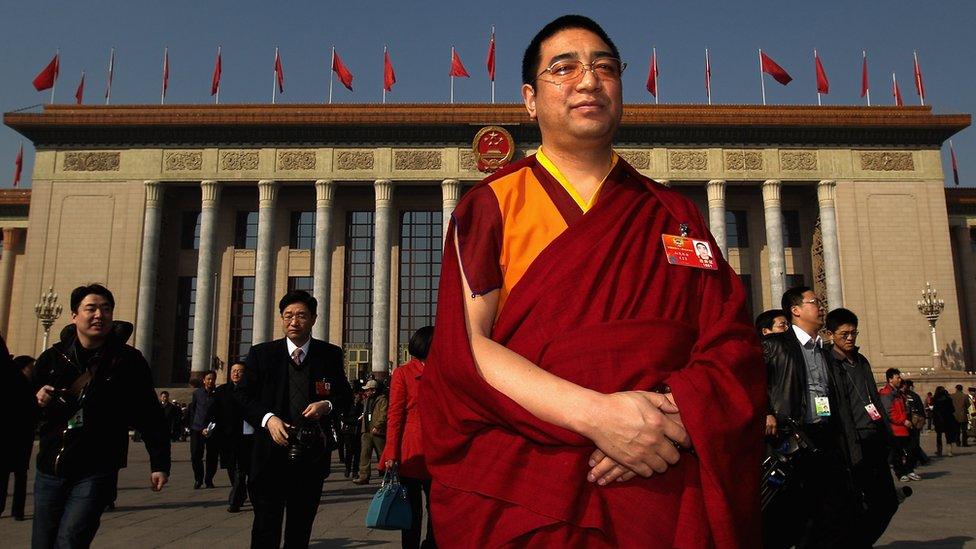China publishes 'verified living buddha' list
- Published

China's buddha database includes photos and other personal details
China has published its first list of "authentic living buddhas", saying that growing numbers of fraudulent buddhas are using their status to swindle money from believers.
Beijing has taken the unusual step of concerning itself with matters of reincarnation by releasing the names, photographs and locations of 870 "verified" buddhas on the website of the State Administration for Religious Affairs, . It's a move that's been praised by one of the men who features on the list. "As a living buddha, I feel genuinely happy about it," Drukhang Thubten Khedrup tells the state-run news agency.
According to China's religious affairs agency, the system has been inaugurated to counter "fake" buddhas who are undermining Tibetan Buddhism by cheating believers out of cash.
However, the spiritual cataloguing scheme has already been criticised as a means of further controlling Tibetan affairs. "This living Buddha database and the whole policy toward reincarnation is clearly a pre-emptive move by the government to control what happens after this Dalai Lama," Amnesty International's Nicholas Bequelin in December 2015, when the list was first announced. It's also seen as a means of confirming state choices for other religious appointments.
Tenzin Gyatso, the 14th and current Dalai Lama, is - according to Tibetan Buddhist belief - a reincarnation of a past lama who decided to be reborn again to continue his work. He has been based in India since fleeing Tibet after the unsuccessful 1959 uprising. In 1995, both he and Beijing appointed different boys as Panchen Lama, the second most important role in Tibetan Buddhism. Now aged 25, on the 20th anniversary of his enthronement in December, presenting him as the one, official holder of the role.
Next story: Turkmenistan authorities 'ban tobacco sales'
Use #NewsfromElsewhere to stay up-to-date with our reports via .